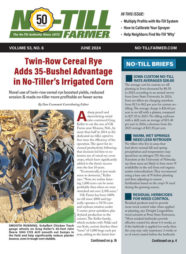By Larry Steckel, Extension Weed Specialist
Clearly henbit has had a very good start this fall. Many fields are showing extensive infestations of this weed and a number of folks have called with questions on how to manage it in wheat.
In some cases, henbit has escaped a Gramoxone application and is now actively competing with the seedling wheat crop. Typically Gramoxone applied as a burndown before wheat will control henbit, but the warm fall this year had helped henbit become well established by Mid-October, which has resulted in sketchy control.
So how do we go after the henbit now in wheat? Given the commodity price on wheat no one is wanting to break the bank on control measures, so one option would be metribuzin. The rate most commonly applied is 2-4 ounces per acre of metribuzin. Though this herbicide can provide low-cost henbit control, some caution needs to be exercised when using metribuzin in wheat. I have seen 4 ounces per acre of metribuzin applied to fields that have eroded hill sides greatly injure wheat stands in Tennessee. This can also be the case for bottom fields that have a good deal of sand. If the field is sandy or has a considerable amount of eroded hill sides, then go with the lower 2-ounces-per-acre rate.
If the henbit is well established and there is some doubt if 2 ounces per acre of metribuzin will work, then consider adding either 4 ounces per acre of dicamba or a pint per acre of 2,4-D. When using metribuzin in wheat, make sure the wheat has at least 3-4 tillers and has 4 secondary roots at least 2 inches long. Both dicamba and 2,4-D can be applied to wheat after it is well tillered but before jointing.






Post a comment
Report Abusive Comment